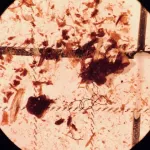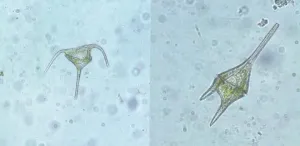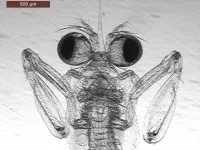Study reveals need for equitable access of minimally invasive heart procedure
Hospital programs for transcatheter aortic valve replacement are less likely to reach underserved communities
2021-04-29
(Press-News.org) WASHINGTON, D.C, (April 29, 2021) - An analysis of growth patterns in transcatheter aortic valve replacement (TAVR) programs across United States hospitals is being presented as late-breaking clinical science at the Society for Cardiovascular Angiography& Interventions (SCAI) 2021 Scientific Sessions. The findings indicate that TAVR hospital programs are predominately located in metropolitan areas serving patients with higher socioeconomic status, potentially contributing to the disparities in cardiac care.
TAVR is a minimally invasive procedure for patients in need of a valve repair or replacement and is an alternative to surgical aortic valve replacement (SAVR), a treatment option requiring open heart surgery. TAVR also provides eligible patients with quicker procedure times and a shorter recovery. Yet, despite the benefits of novel therapeutics such as TAVR, some patients are still referred to SAVR even if they are ideal candidates - prompting a deeper analysis of how the technology is disseminated in certain populations.
The study involved a cross-sectional analysis of Medicare claims data between January 1, 2012 to December 31, 2018. Linear regression models were used to compare socioeconomic characteristics of patients treated at hospitals that did and did not establish TAVR programs to determine the association between area-level markers of socioeconomic status and TAVR rates.
The findings reveal inequitable access to TAVR programs for non-metropolitan or lower income areas across the country. Between 2012 and 2018, 554 hospitals developed new TAVR programs including 543 (98.0%) in metropolitan areas, and 293 (52.9%) in metropolitan areas with pre-existing TAVR programs. Compared with hospitals that did not start TAVR programs, hospitals that did start TAVR programs treated patients with higher median household incomes (difference $1,305, 95% CI $134 to $12,477, p=0.03). Furthermore, TAVR rates per 100,000 Medicare beneficiaries were higher in areas with higher median income, despite adjusting for age and clinical comorbidities.
"TAVR has the potential to be an innovative and effective treatment option for heart valve patients, but can only work to its full potential if all patients have access to it. Our study results show a gap, and as clinicians, we know that these inequities can unfortunately translate into differing outcomes," said Ashwin Nathan MD, Fellow, Cardiovascular Medicine, Hospital of the University of Pennsylvania. "While this is just one example of health inequities, our hope is that these findings will activate a change in how we introduce high-tech solutions, so that all communities can access the care they need."
The authors also acknowledge that increasing access to TAVR and structural heart programs will require foresight into how clinical trials and approval for procedures and technologies at hospitals are distributed.
INFORMATION:
About SCAI:
The Society for Cardiovascular Angiography and Interventions is a professional organization representing more than 4,000 invasive and interventional cardiology professionals in approximately 75 nations. SCAI's mission is to promote excellence in invasive/interventional cardiovascular medicine through physician education and representation, and advancement of quality standards to enhance patient care.
For more information about the SCAI 2021 Scientific Sessions, visit scai.org/scai2021. Follow @SCAI on Twitter for the latest heart health news and use #SCAI2021 to follow the latest discussions.
ELSE PRESS RELEASES FROM THIS DATE:
2021-04-29
Washington, D.C., April 29, 2021 - Two studies related to percutaneous coronary intervention (PCI) evaluating the use of risk-avoidance strategies and robotic-assisted technology, respectively, are being presented as late-breaking clinical science at the Society for Cardiovascular Angiography & Interventions (SCAI) 2021 Scientific Sessions. An analysis of strategically avoiding high-risk PCI cases indicates systematic risk-avoidance does not improve, and may worsen, the quality of hospital PCI programs. A study of a robotic-assisted PCI shows the technology is safe and effective for the treatment of both simple and complex lesions; this has the potential to address the occupational ...
2021-04-29
The United Kingdom government plans to implement mass scale population testing for SARS-CoV-2 infection using Lateral Flow Devices (LFDs), yet the devices' sensitivity is unknown. A study published in the open access journal PLOS Biology by Alan McNally at University of Birmingham, UK, and colleagues suggests while LFDs are highly effective in identifying SARS-CoV-2 in individuals with high quantities of viral RNA present on the test swab, they are inaccurate at diagnosing infections in individuals with lower viral loads.
LFDs are increasingly used to increase testing capacity and screen asymptomatic populations for SARS-CoV-2 infection in mass surveillance programs, yet there are few data ...
2021-04-29
Forget diamonds--plastic is forever. It takes decades, or even centuries, for plastic to break down, and nearly every piece of plastic ever made still exists in some form today. We've known for a while that big pieces of plastic can harm wildlife--think of seabirds stuck in plastic six-pack rings--but in more recent years, scientists have discovered microscopic bits of plastic in the water, soil, and even the atmosphere. To learn how these microplastics have built up over the past century, researchers examined the guts of freshwater fish preserved in museum collections; they found that fish have been swallowing microplastics since the 1950s and that the concentration of microplastics in their guts ...
2021-04-29
NASA's Hubble Space Telescope is giving astronomers a rare look at a Jupiter-sized, still-forming planet that is feeding off material surrounding a young star.
"We just don't know very much about how giant planets grow," said Brendan Bowler of the University of Texas at Austin. "This planetary system gives us the first opportunity to witness material falling onto a planet. Our results open up a new area for this research."
Though over 4,000 exoplanets have been cataloged so far, only about 15 have been directly imaged to date by telescopes. And the planets are so far away and small, they are simply dots in the best photos. The team's fresh technique for using Hubble to directly image this planet paves a new route for further exoplanet ...
2021-04-29
Boulder, Colo., USA: Thirty-one new articles were published online ahead of
print for Geology in April. Topics include shocked zircon from the
Chicxulub impact crater; the Holocene Sonoran Desert; the architecture of
the Congo Basin; the southern Death Valley fault; missing water from the
Qiangtang Basin; sulfide inclusions in diamonds; how Himalayan collision
stems from subduction; ghost dune hollows; and the history of the Larsen C Ice Shelf. These Geology articles are online at END ...
2021-04-29
The genome of single-celled plankton, known as dinoflagellates, is organized in an incredibly strange and unusual way, according to new research. The findings lay the groundwork for further investigation into these important marine organisms and dramatically expand our picture of what a eukaryotic genome can look like.
Researchers from KAUST, the U.S. and Germany have investigated the genomic organization of the coral-symbiont dinoflagellate Symbiodinium microadriaticum. The S. microadriaticum genome had already been sequenced and assembled into segments known as scaffolds but lacked a chromosome-level assembly.
The team used a technique known as Hi-C to detect ...
2021-04-29
DURHAM, N.C. - Mantis shrimp don't need baby food. They start their life as ferocious predators who know how to throw a lethal punch.
A new study appearing April 29 in the Journal of Experimental Biology shows that larvae of the Philippine mantis shrimp (Gonodactylaceus falcatus) already display the ultra-fast movements for which these animals are known, even when they are smaller than a short grain of rice.
Their ultra-fast punching appendages measure less than 1 mm, and develop right when the larva exhausts its yolk reserves, moves away from its nest and out into the big wide sea. It immediately begins preying on organisms smaller than a grain of sand.
Although they accelerate their arms almost 100 times faster than a Formula One car, Philippine mantis shrimp larvae are slower ...
2021-04-29
CORVALLIS, Ore. - Land productivity could be greatly increased by combining sheep grazing and solar energy production on the same land, according to new research by Oregon State University scientists.
This is believed to be the first study to investigate livestock production under agrivoltaic systems, where solar energy production is combined with agricultural production, such as planting agricultural crops or grazing animals.
The researchers compared lamb growth and pasture production in pastures with solar panels and traditional open pastures. They found less overall but higher quality forage in the solar pastures and that lambs raised in each pasture type ...
2021-04-29
ROCHESTER, Minn. -- The Mayo Clinic data scientists who developed highly accurate computer modeling to predict trends for COVID-19 cases nationwide have new research that shows how important a high rate of vaccination is to reducing case numbers and controlling the pandemic.
Vaccination is making a striking difference in Minnesota and keeping the current level of positive cases from becoming an emergency that overwhelms ICUs and leads to more illness and death, according to a study published in Mayo Clinic Proceedings. The study, entitled "Quantifying the Importance of COVID-19 Vaccination to Our Future Outlook," outlines how Mayo's COVID-19 predictive modeling can assess future trends based on the pace of vaccination, and how vaccination trends are crucial ...
2021-04-29
Venus is an enigma. It's the planet next door and yet reveals little about itself. An opaque blanket of clouds smothers a harsh landscape pelted by acid rain and baked at temperatures that can liquify lead.
Now, new observations from the safety of Earth are lifting the veil on some of Venus' most basic properties. By repeatedly bouncing radar off the planet's surface over the last 15 years, a UCLA-led team has pinned down the precise length of a day on Venus, the tilt of its axis and the size of its core. The findings are published today in the journal Nature Astronomy.
"Venus is our sister planet, and yet these fundamental properties have remained unknown," said Jean-Luc Margot, a UCLA professor of Earth, planetary and space sciences who led the research.
Earth ...
LAST 30 PRESS RELEASES:
[Press-News.org] Study reveals need for equitable access of minimally invasive heart procedure
Hospital programs for transcatheter aortic valve replacement are less likely to reach underserved communities





